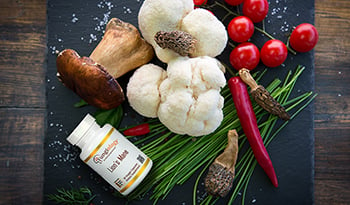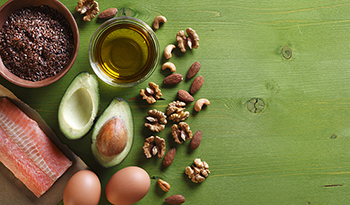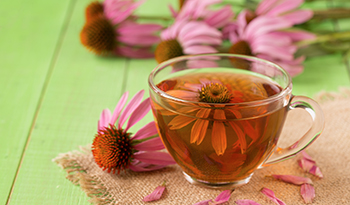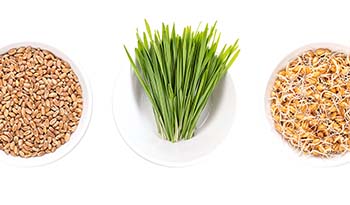Black Cohosh: Testing, Tradition, Immune Health & More
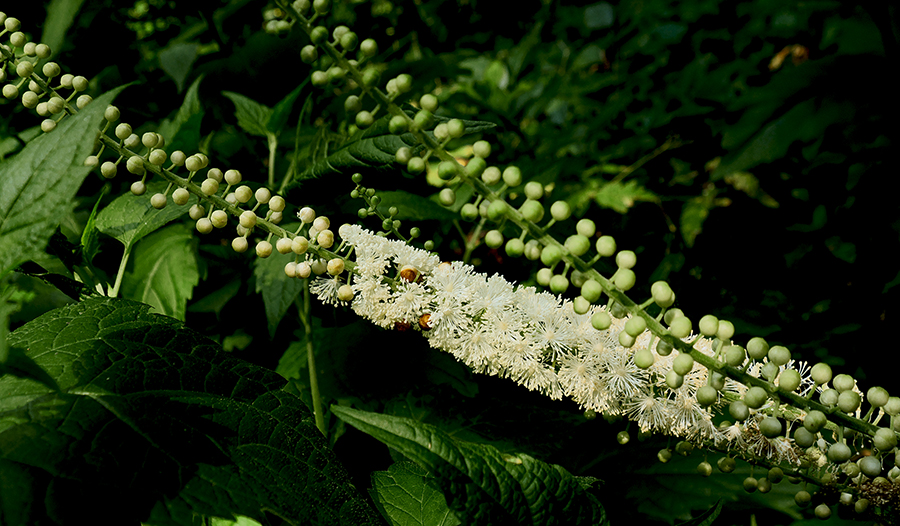
What is Black Cohosh?
Black Cohosh is the most common name for herbal supplements in the Cimicifuga genus of which there are roughly 17 species. Different species of this flowering perennial plant can be found all over the world and their medicinal use is documented in both European and Asian herbal materia medica.
In Traditional Asian Medicine, Cimicifuga heracleifolia and Cimicifuga dahurica are commonly used while in the European Tradition, it is the root of Cimicifuga racemosa that has become the standard. Cimicifuga herbal supplements are rich in several naturally occurring triterpene and polyphenol compounds. Many unique types and ratios of phytonutrient compounds have been identified in different varieties of Cimicifuga and these compounds offer potential clues to help understand their mechanism of action.
The challenge of identifying individual types of Black Cohosh, as well as studying their effects, has been the subject of many modern studies that seek to explore this popular botanical.
Black Cohosh Supplement Testing & Authentication
The popularity of Black Cohosh in women’s health and wellness formulas has helped to drive interest in the study of the chemical components within formulas. The process of testing and classifying each variety has provided a road map to identify the different species.
The use of High-Performance Liquid Chromatography, or HPLC, is an analytical testing technique that is performed in a specialized laboratory that involves separating each chemical component within a sample to identify and quantify each component. The different chemical components, as well as the amount of each component, can be used to identify different varieties by comparing the sample to samples that have been previously tested, mapped, and identified.
In one study published in the Journal of Agricultural and Food Chemistry, a number of Black Cohosh products were analyzed for their triterpene and phenolic constituents using the HPLC test method. A notable finding of this study was the discovery that many different types of Cimicifuga are often used interchangeably. This is problematic because each variety has potentially different effects due to their own unique chemical profiles.
Another analytical testing method uses DNA biotechnology, such as TRU-ID™, to ensure the authenticity of a botanical ingredient. While using genetic testing to validate that a specific botanical species is used is valuable, it does not necessarily document the amount of an individual chemical compound within a sample. For example, many Black Cohosh products contain an extract that has been standardized and the percent of a compound, such as Triterpene, can be found on the Supplement Panel.
Where Does Black Cohosh Come From?
Black Cohosh is found in many Ethnobotanical traditions but for simplicity, this botanical can be described from a European and an Asian Traditional Medical perspective.
In the European tradition, Black Cohosh is often found in women’s hormone support formulas as it can help to ease symptoms related to hot flashes, menopause, and a variety of premenstrual patterns. In a German scientific publication, an investigation of 60 years of Cimicifuga racemosa research described its efficacy and relative safety. Indeed, several studies have documented Black Cohosh as effective in reducing vasomotor symptoms, such as hot flashes and night sweats, associated with menopause.
In the Asian tradition, Black Cohosh can be found in formulas associated with the immune system. In the classic text Shen Nong Ben Cao Jing, written in between 200 and 250 CE, hundreds of medicinal plants were classified and described using poetic language to help describe their functions. This text has been studied and translated into what is often referred to as The Divine Farmer's Materia Medica. In classic texts, Asian Black Cohosh varieties have been described as being used to “clear heat and toxicity”, “raise yang qi” and “release the exterior” which can be interpreted to mean functions related to cooling the body, helping to relieve fever and support the immune system, as well as helping to relieve symptoms related to seasonal cold and flu patterns.
Black Cohosh & Immune Health
Combining Black Cohosh with other herbs for the general support of relief from heat-related issues is common in women’s hormone support formulas but can also be found in a variety of Traditional formulas for cold and flu patterns.
Xin Yi San is a classic Traditional formula that contains an Asian variety of Black Cohosh combined with Magnolia and other herbs for nasal congestion, loss of smell, and congestion that is typical with allergies, the common cold, and some types of flu. In a nationwide population-based study in Taiwan published in 2019, the use of this classic formula was correlated with less severe episodes of hospitalization due to complications associated with allergies over a 10 year study period. Another study published in the journal International Immunopharmacology suggested that Xin Yi San helped to reduce symptoms of allergic rhinitis due to its diverse immunomodulatory effects.
In a study published in the International Journal of Antimicrobial Agents, an extract of Cimicifuga heracleifolia was noted to show potential antiviral activity. The study was designed to examine extracts from specific species of herbal supplements found within the Traditional Asian pharmacopeia and track the chemical constituents that may contribute to their medicinal effect. In another example of the effort to study cold and flu formulas, the variety Cimicifuga dahurica used in the classic formula Sheng Ma Gen Gen Tang was recognized for its antiviral activity and its ability to inhibit damage to cells in the human respiratory tract.
It is important to point out that Black Cohosh is rarely used as an individual herb in Traditional Asian Medicine. A number of popular cold and flu formulas feature Black Cohosh and have been recognized for their effectiveness for respiratory illnesses and allergic rhinitis but further studies are needed to examine the unique chemical combinations that may contribute to these effects.
Black Cohosh, Bone Health, & Healthy Aging
It is generally recognized that Menopause is associated with a decrease in bone density. The biological functions related to this association are complex but research suggests that there are several herbal supplements, including Black Cohosh, that may be useful to help prevent bone loss associated with Osteopenia, Osteoporosis, and Osteoarthritis. For some, the use of hormonal support formulas that contain Black Cohosh combined with Collagen, Vitamin D, and Vitamin K, along with a healthy diet and exercise, may help to slow down bone loss and improve overall connective tissue strength.
Several studies have examined Cimicifuga racemosa, and formulas that feature this type of Black Cohosh and found that it may help prevent bone density loss by promoting cell growth, support collagen production, and influence mineralization of osteoblastic cells. It is theorized that the Triterpene Saponin compounds may be responsible for this osteoprotective effect. Other studies have examined Cimicifuga heracleifolia, the type of Black Cohosh used in Traditional Asian formulas for the treatment of arthritis, and found that compounds within this variety may have a chondroprotective effect. Chondroprotective compounds are specific to helping delay progressive joint space narrowing that is characteristic of arthritis and may help to improve the biomechanics of articular joints by protecting cells found within the cartilage.
Black Cohosh continues to show interesting potential beyond hormonal and immune support. In two recent studies of the Cimicifuga dahurica variety, three previously unidentified phenolic compounds, along with five established compounds, were found to have a protective effect on adrenal cells that were susceptible to oxidative damage. Further research into these antioxidant compounds is needed, but it is theorized that they may have a neuroprotective effect by assisting with inhibiting enzymes within the brain that are involved with the breaking down of neurotransmitters associated with cognitive function and memory. This offers another interesting opportunity in the pursuit of supporting healthy aging beyond a symptomatic point of view, with Black Cohosh helping to protect cells as well as helping to relieve symptoms associated with menopause.
Frequently Asked Questions about Black Cohosh
What does Black Cohosh do for your body?
Research suggests that Black Cohosh can help ease uncomfortable symptoms associated with hormone fluctuations by binding to estrogen receptors to prevent estrogen from attaching. There is evidence to suggest that Black Cohosh also can help to prevent bone loss commonly associated with menopause. More studies are being done to examine how Black Cohosh can help to support inflammatory pathways to assist with immune health and healthy aging.
Does Black Cohosh make you gain weight?
There does not seem to be evidence to support that Black Cohosh causes weight gain. Along with diet and exercise, Black Cohosh may help to regulate the system to support overall physiological health and wellbeing.
How long does it take for Black Cohosh to work?
The effects of Black Cohosh can be influenced by your general state of health and wellness and results can be cumulative and vary from person to person.
Does Black Cohosh increase estrogen?
In studies that looked at the compounds found within Black Cohosh varieties such as Cimicifuga racemosa, the main four triterpenoids, did not increase estrogen levels.
Final Thoughts & Practical Suggestions
Along with a healthy diet and exercise, there are many ways to support healthy aging with Black Cohosh as a single herb or within a formula. It is important to consult a qualified medical professional to help assess your own personal health and wellness, but here are a few final tips to keep in mind while when selecting products:
- Look for products that have a Latin name as well as a common name in the Supplement Facts panel, i.e. Black Cohosh Root Extract (Cimicifuga racemosa)
- Look for standardization of chemical constituents, i.e. Black Cohosh Root Extract (2.5% Triterpene Glycosides) (Cimicifuga racemosa)
- Look for products that have been tested using methods such as HPLC testing or DNA testing such as TRU-ID™.
- In general, look for products that offer 3rd party testing, such as the iTested program, to help identify quality and authenticity.
References:
- Cimicifuga. Wikipedia. Last Modified Date 19, October 2018
- Traditional uses, phytochemistry, pharmacology and toxicology of the genus Cimicifuga: A review. Journal of Ethnopharmacology. 2017 Sep 14;209:264-282
- Mass spectrometric dereplication of nitrogen-containing constituents of black cohosh (Cimicifuga racemosa L.), Fitoterapia. 2012 Apr;83(3):441-60.
- Evaluation of the Botanical Authenticity and Phytochemical Profile of Black Cohosh Products by High-Performance Liquid Chromatography with Selected Ion Monitoring Liquid Chromatography–Mass Spectrometry. J Agric Food Chem. 2006 May 3; 54(9): 3242–3253.
- DNA barcode identification of black cohosh herbal dietary supplements. Journal of AOAC International. Jul-Aug 2012;95(4):1023-34.
- 60 years of Cimicifuga racemosa medicinal products. Wien Med Wochenschr. 2017; 167(7): 147–159.
- Cimicifuga racemosa dried ethanolic extract in menopausal disorders: a double-blind placebo-controlled clinical trial. Maturitas. 2005 Aug 16;51(4):397-404
- Efficacy of Cimicifuga racemosa on climacteric complaints: a randomized study versus low-dose transdermal estradiol. Gynecol Endocrinol. 2005 Jan;20(1):30-5.
- Yang, Shou-zhong, The Divine Farmer's Materia Medica: A Translation of the Shen Nong Ben Cao Jing. Blue Poppy Press. 1998.
- Identification of fukinolic acid from Cimicifuga heracleifolia and its derivatives as novel antiviral compounds against enterovirus A71 infection. Int J Antimicrob Agents. 2019 Feb;53(2):128-136.
- Sheng-Ma-Ge-Gen-Tang (Shoma-kakkon-to) inhibited the cytopathic effect of human respiratory syncytial virus in cell lines of human respiratory tract. J Ethnopharmacol. 2011 May 17;135(2):538-44.
- Trends and prescription patterns of traditional Chinese medicine use among subjects with allergic diseases: A nationwide population-based study. World Allergy Organ J. 2019; 12(2): 100001.
- Traditional Chinese medicine, Xin-yi-san, reduces nasal symptoms of patients with perennial allergic rhinitis by its diverse immunomodulatory effects. Int Immunopharmacol. 2010 Aug;10(8):951-8.
- Natural Products from Chinese Medicines with Potential Benefits to Bone Health. Molecules. 2016 Mar; 21(3): 239.
- Combined prescription (OAH19T) of Aralia cordata Thunb and Cimicifuga heracleifolia Komar and its major compounds inhibit matrix proteinases and vascular endothelial growth factor through the regulation of mitogen-activated protein kinase pathwayJ Ethnopharmacol. 2011 May 17;135(2):414-21.
- Polyphenolic compounds with antioxidant potential and neuro-protective effect from Cimicifuga dahurica (Turcz.) Maxim. Fitoterapia. 2016 Dec;115:52-56.
- The insight of in vitro and in silico studies on cholinesterase inhibitors from the roots of Cimicifuga dahurica (Turcz.) Maxim. J Enzyme Inhib Med Chem. 2018; 33(1): 1174–1180.
- Black Cohosh: Insights into its Mechanism(s) of Action. Integrative Medical Insights. 2008 Aug 27; 21–32
- Physiological investigation of a unique extract of black cohosh (Cimicifugae racemosae rhizoma): a 6-month clinical study demonstrates no systemic estrogenic effect. J Womens Health Gend Based Med. 2002 Mar 11:163-74.
DISCLAIMER:This Wellness Hub does not intend to provide diagnosis...













































































 Table of Contents
Table of Contents





